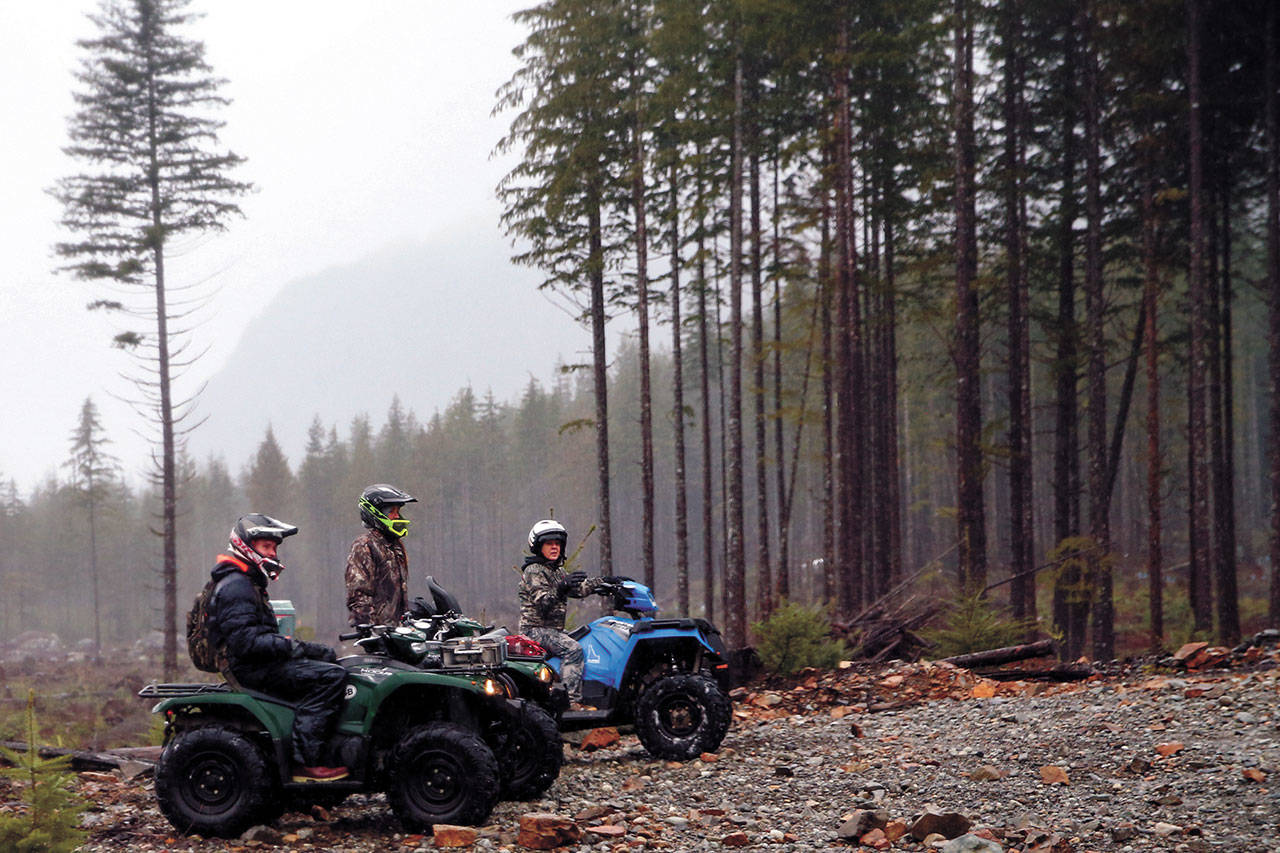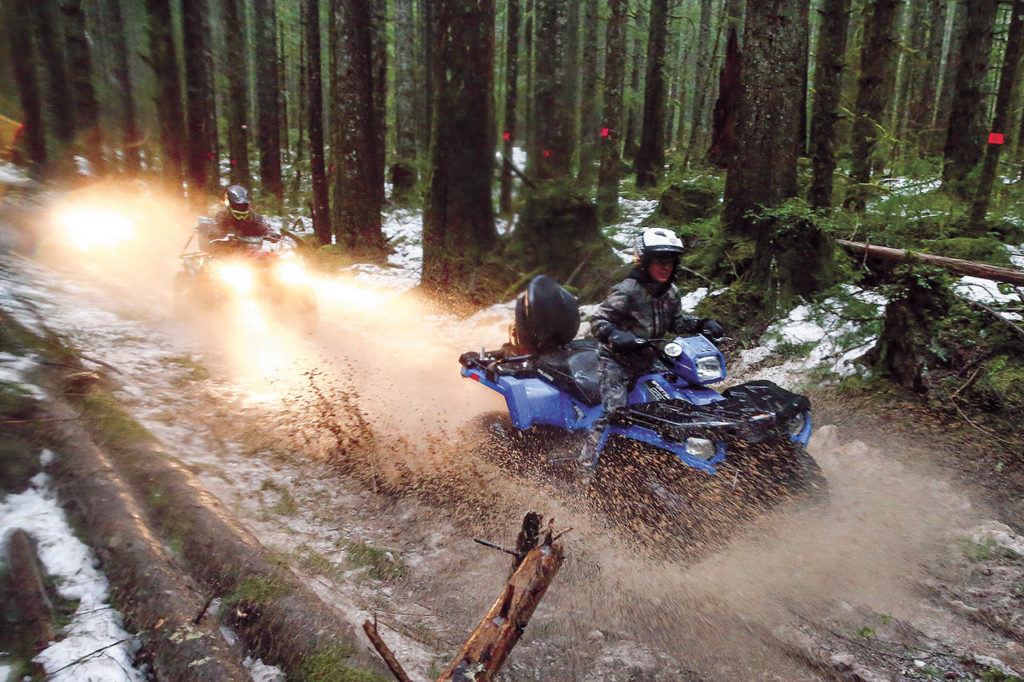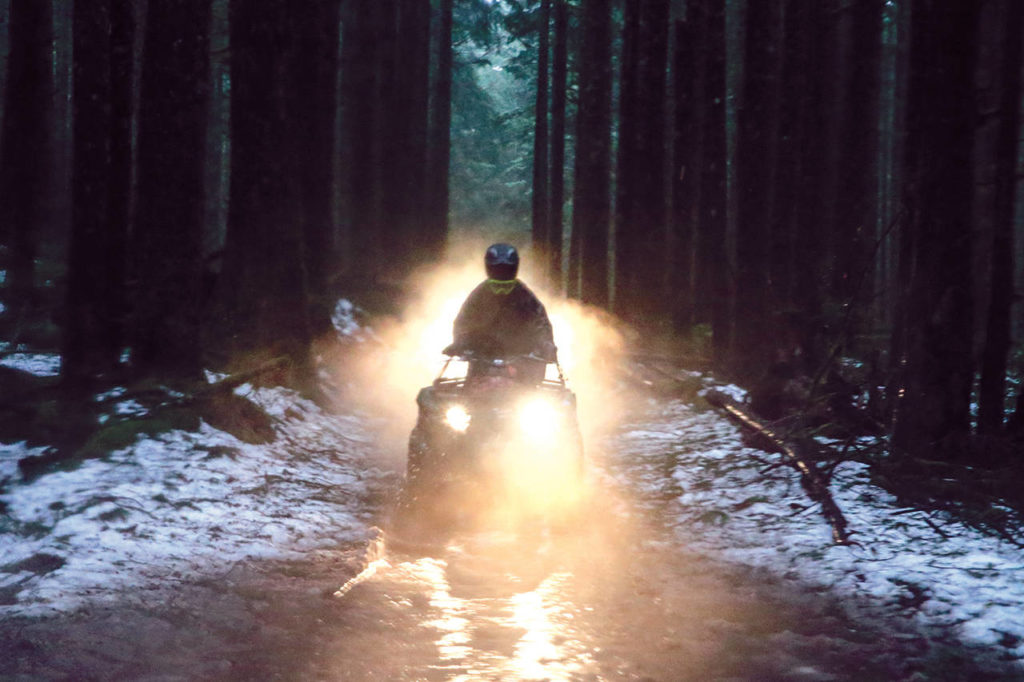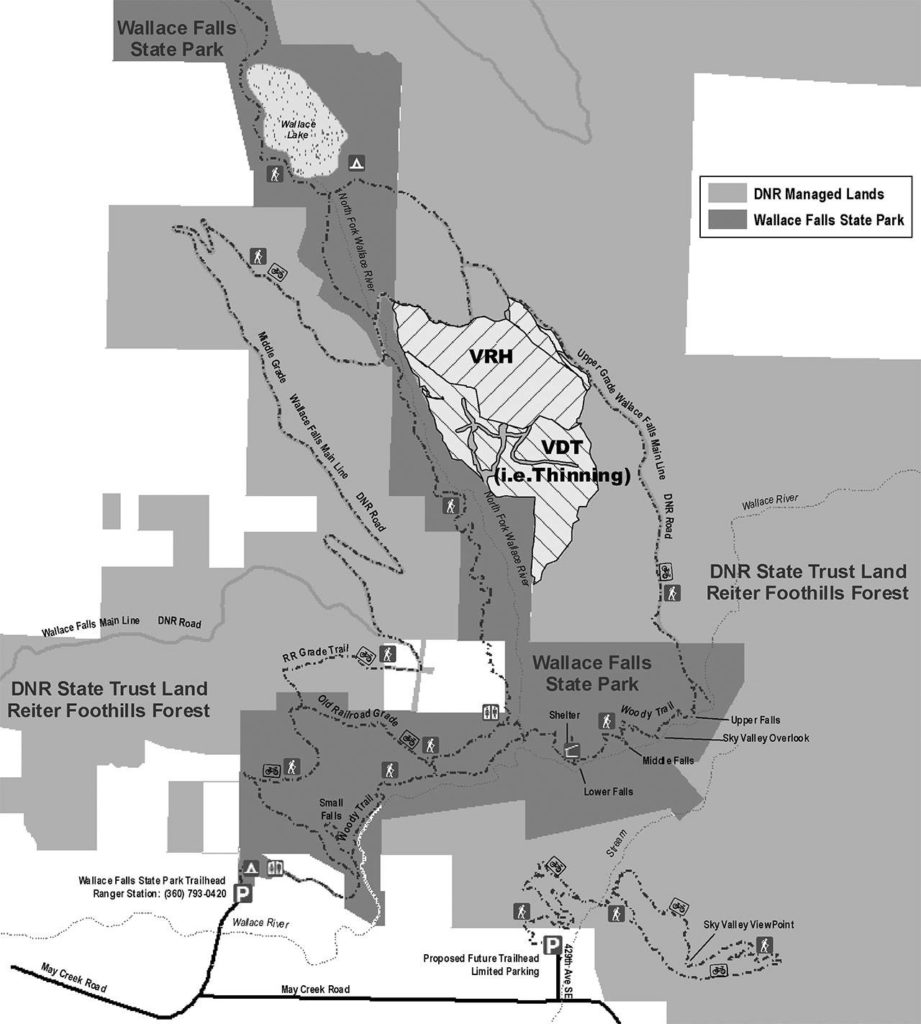GOLD BAR — The state will harvest over 400 acres of trees near Gold Bar this summer in forest adjacent to Wallace Falls State Park and throughout popular motorized trails in the Reiter Foothills Forest.
Together, the sales will generate more than $2 million for public schools, fire departments, libraries, hospitals and other community services.
Trees on nearly 210 acres north of the popular Woody Trail in Wallace Falls State Park, which leads to the falls, were sold in March. Harvesting will likely begin later this summer, said state Department of Natural Resources Cascade District Recreation Manager Benjamin Hale.
The harvest area, called Brushcrasher, is between the falls and Wallace Lake. It’s bordered on the east by the Upper Grade Wallace Falls Mainline, a DNR road that mountain bikers and some hikers use to reach Wallace Lake.
After the harvest, the DNR will reroute that road directly through the harvest area to a spot less prone to washout. The state plans to abandon the current road and leave it for recreational use.
About half the planned logging consists of thinning, which cuts down a third of the trees. The rest is more aggressive, leaving eight trees per acre.
“Its going to be harvested but you’ll also get amazing views,” Hale said. “It’s just going to be a different kind of feel for the forest than what it is right now, which is a bunch of overgrowth.”
Recreators won’t see any of the logging from the Woody Trail, he said.
The harvest area is also near the Greg Ball Trail, which hikers commonly use to reach Wallace Lake.
“It’s possible you’ll see a bit more daylight through the trees, but it’s not like the Greg Ball Trail will be harvested or anything close to it,” Hale said.
The Brushcrasher sale will generate over $1 million for public institutions funded by the DNR.
The other 220 acres, known as the Sky Rider sale, is in an area of Reiter where motorized vehicles are allowed. Trails in the forest are frequented by mountain bikers and ATV riders, with miles of trails crisscrossing through cedar, hemlock and Douglas fir trees.
Parts of the trails offer stunning views of the Skykomish Valley, with both the Olympic and Cascade ranges visible on clear days.
Amid the trails, roadwork for the harvest is already under way. Logging will begin within a few weeks, Hale said.
The Sky Rider harvest consists entirely of thinning. That’s done mostly in patches or corridors, Hale said.
“It’s going to look a bit different next time you go out on an ATV over there,” he said.
The state plans to log mostly hemlock trees, which are prone to blowing over. Most of the Douglas firs will remain because they’re good habitat for the Northern Spotted Owl, which is listed as threatened under the Endangered Species Act, Hale said.
The Sky Rider harvest will generate about $1 million.
There’s no doubt both Brushcrasher and Sky Rider will impact established recreation uses in the forest, said Evergreen Mountain Bike Alliance Executive Director Yvonne Kraus. But she views the logging as an opportunity to work with the DNR to establish better trail systems.
“From day one our community has been very aware that we’re privileged to use that working forest and that those harvests are going to happen,” Kraus said. “I look at it as an opportunity to collaborate with land management and highlight areas during restoration where improvements can be made.”
In the Reiter foothills, Kraus said, the mountain bike community would like to see more trails connect to Wallace Falls State Park.
“To us, (harvests) are not a barrier, they’re a temporary impact,” she said.
Headed into what state officials fear could be an intense fire season, Hale said, harvests like Brushcrasher and Sky Rider can help prevent wildfire spread.
“When we do timber harvests, we remove a lot of fuel,” he said. “And right now there’s a stockpile of fuel sitting out in the forest.”
Julia-Grace Sanders: 425-339-3439; jgsanders@heraldnet.com.
Talk to us
> Give us your news tips.
> Send us a letter to the editor.
> More Herald contact information.




























